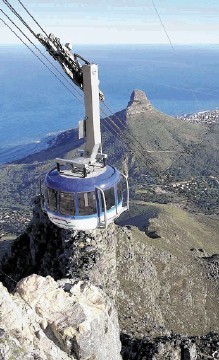
Exploration and production (E&P) activity is gaining momentum across the south-western regions of Africa and in particular South Africa. Favourable geology for oil and gas off the country’s west coast, high levels of foreign direct investment (FDI), legislative changes and updates to the tax regime are continuing to improve South Africa’s investment in oil and gas prospects.
o Industry and historical perspective
South Africa is Africa’s largest economy, it has a sizeable domestic market with growing levels of disposable income, a comparatively well-educated labour force, and an institutional environment that is conducive toward business. The substantial resource endowment has meant that South Africa has been a popular destination for foreign direct investment for a number of decades.
South Africa’s history of apartheid prevented any serious international exploration efforts in this frontier region until the mid-90s. Some small crude and gas discoveries had been made during the 70s and 80s by South Africa’s national oil company PetroSA off the south coast and one gas field was producing feedstock for PetroSA’s (and the world’s first commercial) gas to liquid (GTL) refinery (Mossgas) by 1992. Since that time, a number of large and small players have entered the market.
South Africa has a generally sophisticated industrial base that includes four crude and three coal to liquids (CTL)/gas to liquids (GTL) refineries, but natural gas is barely used in industry outside of the GTL context or for domestic application. Accordingly, natural gas E&P suffers from a lack of availability of downstream infrastructure and markets.
According to the 2011 Petroleum Agency of South Africa’s (PASA) report to parliament, recoverable reserves of oil were estimated at 9.34billion barrels, while technically recoverable gas – at 45.9trillion cu.ft.
The deepwater harbours and bays of Cape Town and Saldanha have recently extended their industry service capabilities in the expectation that the scramble for oil off the west coast of the continent will demand the availability of extensive fabrication and repair facilities, which currently are largely supplied from outside the continent.
o Regulatory environment
A general revision of the government’s minerals policies concerning both rights and royalties, together with a rewriting of the petroleum taxation rules, took place following the end of apartheid.
From an E&P perspective, this required the conversion of existing exploration and production rights into so-called “new order rights” under the Mineral and Petroleum Resources Development Act, a process which was subject to administrative delays in the Department of Mineral and Energy Affairs.
Furthermore, the new fiscal stability regime provided for under the petroleum tax legislation was slow to be implemented and several stability agreements remain unsigned. This is largely the result of the high workload that the Ministry of Finance/National Treasury is coping with, as well as the relative newness of E&P issues to many members of the Treasury staff.
These developments led to significant delays in the pursuit of drilling programmes between 2005 and 2010, but these problems now seem to have been resolved and several exploration wells are currently in an advanced stage of planning by BHP Billiton, Canadian Natural Resources and PetroSA.
Forest appears to be making progress on finding a customer for the gas from its Ibhubezi field and tie-ins to satellite fields are extending the life of the Mossgas refinery.
o Shale gas
The worldwide interest in shale gas includes acreage in South Africa, which, according to the US Department of Energy, potentially enjoys the fifth-largest reserves of shale gas worldwide (although hard data is lacking).
Shell (among others) has applied for exploration rights over about 90,000 sq km in the Karoo semi-desert, but as a consequence of public concerns over the environmental consequences of “fracking” and the impact of mining operations on a fragile eco system, a moratorium (of uncertain duration) has been imposed on all exploration and development.
o Petroleum taxation regime
The original prospecting and mining lease issued by PASA (the OP26 lease) contained its own fiscal terms outside of the provisions of the Income Tax Act. These terms were replaced with effect from 2006-07 by a new regime under the Tenth Schedule of the Income Tax Act, 1962. This change was a consequence of the new minerals legislation and the Tenth Schedule was eventually drafted and passed into law in 2006.
However, a number of technical deficiencies remained and these have been addressed over the past few years.
The normal income tax rules require a company to determine its taxable income by deducting from income accruing in the tax year the non-capital expenditure incurred in the production of that income.
A variety of special rules, which also apply to oil and gas companies unless counteracted by the Tenth Schedule, allow for the amortisation of capital expenditure on assets and regulate, among other things:
o The deduction of interest and finance charges.
o The timing of deductions relating to future benefits.
o The deduction of bad and doubtful debts.
o The tax treatment of intellectual property royalties.
o The tax recognition of transactions between related entities (including thin-cap and transfer pricing)
o Progress, potential, profitability
In Ernst & Young’s second Africa attractiveness survey, South Africa’s prospects were highlighted as very healthy with FDI inflows forecast to average about $10billion per annum over the next five years, with about 125,000 jobs created as a result.
Coupled with South Africa’s recent membership of the BRICS (Brazil, Russia, India, China, South Africa) group and also of the G20, the region has been marked as one to watch.
Derek Leith is a tax partner at Ernst & Young dleith@uk.ey.com